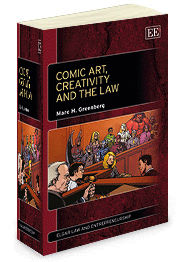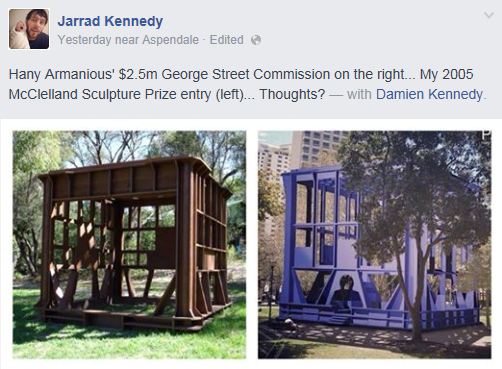In a recent
post Jeremy discussed the copyright infringement case brought against American Eagle Outfitters by street artist, AholSniffsGlue. The artist alleged that the clothing company placed models in front of the artist's murals and then used those photos to achieve a certain look in its summer ad campaign by prominently featuring the artist's work in its billboards, window displays, website, and social media. As many who have commented on this case noted, American Eagle made a particularly egregious use of the artist's work by featuring a photograph of a white, clean cut looking model standing in front of one of the artist's murals holding a can of spray paint, thus implying that the mural was created by the model and not by the Cuban-American artist.
On the heels of this case comes two cases filed on August 19, 2014 by renowned artist,
Maya Hayuk, regarding unauthorized reproduction of her mural,
Chem Trails NYC, a painting which was located on the Bowery Mural Wall, a well-known, curated outdoor exhibition space in New York City
. One case was brought against singer Sara Bareilles, as well as her record company, its parent company, and her publicity and promotion companies. The second lawsuit is against fashion giant, Coach.
The cases were filed in the U.S. District Court for the Southern District of New York (cause numbers 14-cv-06668-VEC and 14-cv-06659-LAK).
The complaint against Coach is not yet available, but according to the complaint against Bareilles, Hayuk painted the mural in the NYC location in February 2014 and also registered the copyright in the work at that time. (A savvy move, as U.S. law requires timely copyright registration to qualify for statutory damages and a plaintiff must have a copyright registration to file a lawsuit for infringement.) The artist alleges that Bareilles and the other defendants used her mural, without permission, in the promotion of Bareilles and her upcoming "Little Black Dress" tour. Images in Hayuk's complaint show Bareilles, a small figure in a black dress, posed in front of the mural, and show that such images were used extensively to the promote the singer, and used in her online and social media promotion. Hayuk seeks preliminary and permanent injunction against Bareilles's continued use of her painting as well as damages in either the form of statutory damages (up to $150,000 against each defendant) or an award of profits attributable to the infringement, as well as attorney fees.
It is, at least in my opinion, alarming that large companies with ample legal resources have (allegedly) approached the work of these artists with such recklessness, (allegedly) commercially exploiting these paintings without permission to achieve a certain look in ad campaigns. Perhaps these lawsuits will serve as a cautionary tale that publicly situated murals are not just up for grabs.






